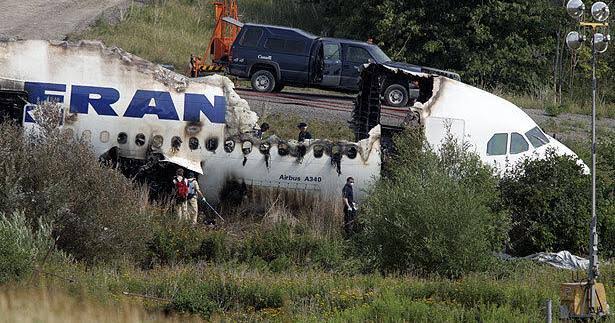
Ignored Warnings? The Disturbing Facts About Air France’s Worst Aviation Tragedy
Air France Flight 447, en route from Rio de Janeiro to Paris on June 1, 2009, remains one of the most devastating aviation disasters in modern history. The Airbus A330-203, carrying 228 passengers and crew, crashed into the Atlantic Ocean, leaving no survivors. Despite years of advancements in aviation technology, the tragedy exposed glaring issues within the airline industry, including ignored warnings, mechanical failures, and human error. This article delves into the critical factors that led to the catastrophe, revealing unsettling details about one of Air France’s darkest moments.
The Sequence of Events Leading to Disaster
At approximately 01:35 UTC, Flight 447 encountered a severe storm over the Atlantic. The aircraft’s pitot tubes, which measure airspeed, began to malfunction due to ice buildup. This failure triggered a chain of errors in the aircraft’s autopilot and flight control systems. Within minutes, the pilots, unaware of their true airspeed, made critical miscalculations. The aircraft ultimately stalled, leading to a three-and-a-half-minute freefall into the ocean.
Ignored Warnings and Overlooked Issues
Investigations revealed that Air France and Airbus had received multiple warnings about pitot tube malfunctions before the crash. The Thales-manufactured sensors had shown signs of vulnerability to ice accretion in previous incidents. Despite these red flags, replacements were slow and incomplete, leaving many aircraft, including Flight 447, with outdated and unreliable sensors.
Additionally, the airline industry had long known about the risks associated with high-altitude flying through storms, yet pilots received insufficient training on how to handle airspeed inconsistencies. The failure to act on these warnings played a direct role in the tragedy.
The Human Factor: Crew Response and Training Deficiencies
One of the most haunting aspects of the disaster was the pilots’ response. Black box recordings revealed that the crew failed to recognize the stall situation, despite clear indications. Instead of applying the standard nose-down recovery maneuver, they pulled back on the controls, exacerbating the stall.
This mishandling highlighted significant deficiencies in pilot training, particularly in manual flying skills and high-altitude stall recovery techniques. The reliance on automation had left many pilots ill-prepared for emergency situations where automated systems fail.
Technical Failures: The Pitot Tube Controversy
The malfunctioning pitot tubes became a central focus of the investigation. Airbus had been aware of ice-related failures in similar models and had recommended replacing the Thales pitot tubes with newer versions. However, Air France had not completed this transition across its fleet. As a result, Flight 447’s sensors failed at the worst possible moment, depriving pilots of crucial airspeed data.
The Aftermath: Changes in Aviation Safety
The disaster led to significant changes in aviation regulations and pilot training. The industry reevaluated the over-reliance on automation, emphasizing the importance of manual flying skills. Air France and other airlines introduced new protocols for high-altitude stall training and enhanced pilot simulations for handling pitot tube failures.
Additionally, the International Civil Aviation Organization (ICAO) and European Aviation Safety Agency (EASA) pushed for improvements in black box technology, advocating for real-time flight data streaming to prevent future tragedies from remaining unsolved for extended periods.
Conclusion: A Tragedy That Could Have Been Prevented
Air France Flight 447 was not merely an unfortunate accident but a preventable disaster shaped by ignored warnings, systemic failures, and human errors. The reluctance to act on known risks, combined with inadequate pilot training and faulty equipment, created a perfect storm of failure. While changes have been implemented to prevent a recurrence, the tragedy remains a stark reminder of the consequences of complacency in aviation safety.